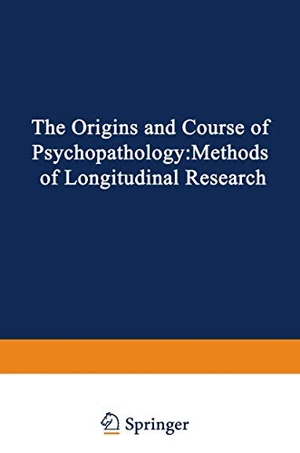Für statistische Zwecke und um bestmögliche Funktionalität zu bieten, speichert diese Website Cookies auf Ihrem Gerät. Das Speichern von Cookies kann in den Browser-Einstellungen deaktiviert werden. Wenn Sie die Website weiter nutzen, stimmen Sie der Verwendung von Cookies zu.
Cookie akzeptieren
The Origins and Course of Psychopathology
- Springer US
- 2012
- Taschenbuch
- 468 Seiten
- ISBN 9781468423570
The Society for Life History Research in Psychopathology is a group of investigators from many disciplines who share an interest in studying the longitudinal aspects of psychiat ric disorder. Sociologists, psychologists, statisticians, psychiatrists, epidemiologists, and others each bring to the study of life history the expertise and vantage point arising from his or her unique training and experience. This volume, the fifth in a series, is devoted to explor ing the methods used to contribute to the understanding of the complex unfolding of a human life as it avoids, copes with, or succumbs to psychiatric disorder. We hope that by describing these methods, their current status,
Mehr
Weniger
zzgl. Versand
in Kürze